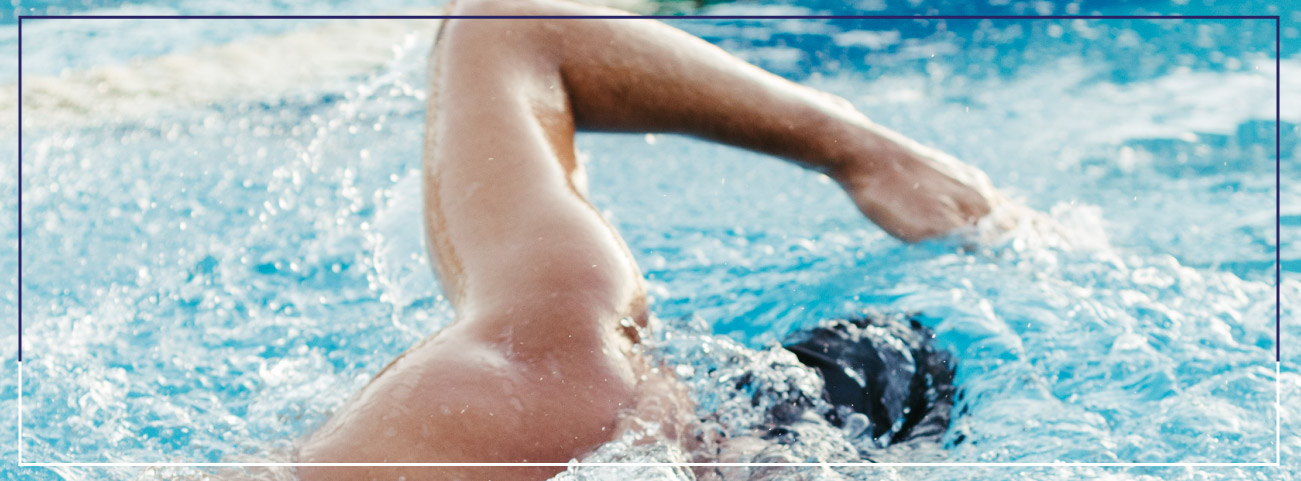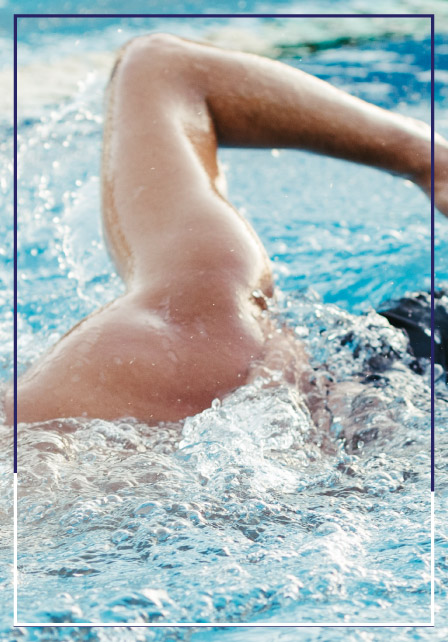Swimming Resistance Bands: How To Use Them
Swimming resistance bands are becoming increasingly popular in the world of swimming and fitness. They are an excellent tool for improving strength, stamina, and technique, proving beneficial for both recreational swimmers and professional athletes. A swimming resistance band is essentially a large, sturdy rubber band that you can use to simulate the motions of swimming when you're on dry land. They help target and develop the specific muscles used in various swimming strokes.

Why Use Swimming Resistance Bands?
Swimming resistance bands offer a wide array of benefits to swimmers. They not only aid in strength building, endurance training, and stroke refinement, but also provide added resistance during swim workouts. These bands can be seamlessly incorporated into a warm-up routine to effectively prepare the muscles for a swim, or they can be used as part of a recovery routine to maintain strength levels and mobility during periods of injury or limited access to a pool. With their versatility and effectiveness, swimming resistance bands are a valuable tool for swimmers of all levels.
The Right Way to Use Swimming Resistance Bands
When using a swimming resistance band, the process is quite straightforward. To begin, find a sturdy object at waist height and securely anchor the band to it. Make sure that the band has enough length to allow for unrestricted movement without any slack. Once you have set up the band, you can start performing swimming movements, such as freestyle or breaststroke, while experiencing the resistance provided by the band. This resistance helps to strengthen your muscles and improve your swimming technique, making it an effective training tool for swimmers of all levels.
Freestyle Stroke
Assume a standing position with your feet shoulder-width apart. Extend one arm straight out in front of you, parallel to the ground. With your other hand positioned at your side, firmly grip the resistance band. Now, smoothly pull the band back towards your body, simulating the fluid stroke movement experienced in water. Feel the resistance as you engage your muscles and envision the power and grace of a swimmer gliding through the water.
Breaststroke
With the band positioned at chest height, firmly hold it with both hands extended in front of you. Imagine yourself in the water, and as you mimic the breaststroke movement, gently pull your hands apart and gradually bring them back towards your chest. This exercise helps to strengthen the muscles involved in the breaststroke, providing a great workout for your upper body.

Butterfly Stroke
To execute the butterfly stroke, begin by positioning your hands together at waist level, firmly grasping the band. Initiate the stroke by smoothly pulling the band upwards and outwards in a fluid circular motion, meticulously emulating the precise movement pattern of this elegant swimming technique.
Backstroke
For the backstroke, you’ll need to anchor the band a bit higher, roughly at the height of your head. Stand facing away from the anchor point and hold the band with both hands straight in front of you. Simulate the backward rotating motion of the backstroke by pulling the band down and behind you, alternating hands. Ensure that the movement is slow and controlled, imitating the actual pace and rhythm of the backstroke.
Cooling Down with Resistance Bands
After a rigorous workout, it’s crucial to cool down properly. This can also be achieved with your swimming resistance band. Simple stretching exercises, like overhead arm stretches and side bends, can help to alleviate muscle tension and promote recovery. Slowly stretch the band above your head or to your sides and hold the position for a few seconds, allowing your muscles to relax.
As you can see, the swimming resistance band is not only a versatile training tool but also an effective aid for warming up and cooling down. Whether you’re a beginner or a seasoned swimmer, incorporating resistance band exercises into your training routine can significantly enhance your swimming performance.
Safety Tips
To ensure your safety and prevent injuries, it is crucial to maintain a stable stance while using a resistance band. It is highly recommended to begin with a low resistance band and gradually increase the resistance level as your strength and proficiency improve over time. Taking this progressive approach will not only enhance your overall performance but also minimise the risk of strain or accidents during your workout sessions. Remember, prioritising your stability and gradually challenging your muscles will lead to better and more sustainable results in the long run.

Who Should Avoid Using Swimming Resistance Bands?
While swimming resistance bands are highly beneficial for most, there are certain groups who should approach their use with caution, or potentially avoid them altogether. Individuals with pre-existing musculoskeletal injuries, particularly those related to the shoulder, back, or knees, should consult a healthcare professional before incorporating resistance bands into their workout regime. This is to ensure that they don’t worsen their condition or cause further damage.
Beginners in physical training or swimming should also be cautious. Without the proper technique, using resistance bands could lead to strain or injury. It’s recommended that they start under professional guidance to learn the correct techniques and build up their strength progressively.
Anyone who feels pain, discomfort, or dizziness while using the bands should stop immediately and seek medical advice. Remember, the key to a successful workout is not just intensity, but also safety.
Conclusion
Swimming resistance bands are an exceptional and highly recommended tool for swimmers of all levels. With their unique properties, they provide a multitude of benefits to enhance swimming technique, build strength, and increase stamina. These versatile and user-friendly bands can be seamlessly integrated into any training regime, allowing swimmers to target specific muscle groups and improve their overall performance in the water.
Take the Plunge with Factory Pools Perth
Ready to make a splash in your backyard? Factory Pools Perth, a leading installer of fibreglass pools, is here to help you create the perfect oasis. Our expert team offers a range of high-quality, durable, and beautiful fibreglass pools that cater to every taste and budget. Don’t wait, dive into a healthier and more enjoyable lifestyle today. Contact us for a free consultation and let us help you transform your outdoor space into your very own paradise.
Swimming Resistance Bands: How To Use Them
Swimming resistance bands are becoming increasingly popular in the world of swimming and fitness. They are an excellent tool for improving strength, stamina, and technique, proving beneficial for both recreational swimmers and professional athletes. A swimming resistance band is essentially a large, sturdy rubber band that you can use to simulate the motions of swimming when you're on dry land. They help target and develop the specific muscles used in various swimming strokes.

Why Use Swimming Resistance Bands?
Swimming resistance bands offer a wide array of benefits to swimmers. They not only aid in strength building, endurance training, and stroke refinement, but also provide added resistance during swim workouts. These bands can be seamlessly incorporated into a warm-up routine to effectively prepare the muscles for a swim, or they can be used as part of a recovery routine to maintain strength levels and mobility during periods of injury or limited access to a pool. With their versatility and effectiveness, swimming resistance bands are a valuable tool for swimmers of all levels.
The Right Way to Use Swimming Resistance Bands
When using a swimming resistance band, the process is quite straightforward. To begin, find a sturdy object at waist height and securely anchor the band to it. Make sure that the band has enough length to allow for unrestricted movement without any slack. Once you have set up the band, you can start performing swimming movements, such as freestyle or breaststroke, while experiencing the resistance provided by the band. This resistance helps to strengthen your muscles and improve your swimming technique, making it an effective training tool for swimmers of all levels.
Freestyle Stroke
Assume a standing position with your feet shoulder-width apart. Extend one arm straight out in front of you, parallel to the ground. With your other hand positioned at your side, firmly grip the resistance band. Now, smoothly pull the band back towards your body, simulating the fluid stroke movement experienced in water. Feel the resistance as you engage your muscles and envision the power and grace of a swimmer gliding through the water.
Breaststroke
With the band positioned at chest height, firmly hold it with both hands extended in front of you. Imagine yourself in the water, and as you mimic the breaststroke movement, gently pull your hands apart and gradually bring them back towards your chest. This exercise helps to strengthen the muscles involved in the breaststroke, providing a great workout for your upper body.

Butterfly Stroke
To execute the butterfly stroke, begin by positioning your hands together at waist level, firmly grasping the band. Initiate the stroke by smoothly pulling the band upwards and outwards in a fluid circular motion, meticulously emulating the precise movement pattern of this elegant swimming technique.
Backstroke
For the backstroke, you’ll need to anchor the band a bit higher, roughly at the height of your head. Stand facing away from the anchor point and hold the band with both hands straight in front of you. Simulate the backward rotating motion of the backstroke by pulling the band down and behind you, alternating hands. Ensure that the movement is slow and controlled, imitating the actual pace and rhythm of the backstroke.
Cooling Down with Resistance Bands
After a rigorous workout, it’s crucial to cool down properly. This can also be achieved with your swimming resistance band. Simple stretching exercises, like overhead arm stretches and side bends, can help to alleviate muscle tension and promote recovery. Slowly stretch the band above your head or to your sides and hold the position for a few seconds, allowing your muscles to relax.
As you can see, the swimming resistance band is not only a versatile training tool but also an effective aid for warming up and cooling down. Whether you’re a beginner or a seasoned swimmer, incorporating resistance band exercises into your training routine can significantly enhance your swimming performance.
Safety Tips
To ensure your safety and prevent injuries, it is crucial to maintain a stable stance while using a resistance band. It is highly recommended to begin with a low resistance band and gradually increase the resistance level as your strength and proficiency improve over time. Taking this progressive approach will not only enhance your overall performance but also minimise the risk of strain or accidents during your workout sessions. Remember, prioritising your stability and gradually challenging your muscles will lead to better and more sustainable results in the long run.

Who Should Avoid Using Swimming Resistance Bands?
While swimming resistance bands are highly beneficial for most, there are certain groups who should approach their use with caution, or potentially avoid them altogether. Individuals with pre-existing musculoskeletal injuries, particularly those related to the shoulder, back, or knees, should consult a healthcare professional before incorporating resistance bands into their workout regime. This is to ensure that they don’t worsen their condition or cause further damage.
Beginners in physical training or swimming should also be cautious. Without the proper technique, using resistance bands could lead to strain or injury. It’s recommended that they start under professional guidance to learn the correct techniques and build up their strength progressively.
Anyone who feels pain, discomfort, or dizziness while using the bands should stop immediately and seek medical advice. Remember, the key to a successful workout is not just intensity, but also safety.
Conclusion
Swimming resistance bands are an exceptional and highly recommended tool for swimmers of all levels. With their unique properties, they provide a multitude of benefits to enhance swimming technique, build strength, and increase stamina. These versatile and user-friendly bands can be seamlessly integrated into any training regime, allowing swimmers to target specific muscle groups and improve their overall performance in the water.
Take the Plunge with Factory Pools Perth
Ready to make a splash in your backyard? Factory Pools Perth, a leading installer of fibreglass pools, is here to help you create the perfect oasis. Our expert team offers a range of high-quality, durable, and beautiful fibreglass pools that cater to every taste and budget. Don’t wait, dive into a healthier and more enjoyable lifestyle today. Contact us for a free consultation and let us help you transform your outdoor space into your very own paradise.



